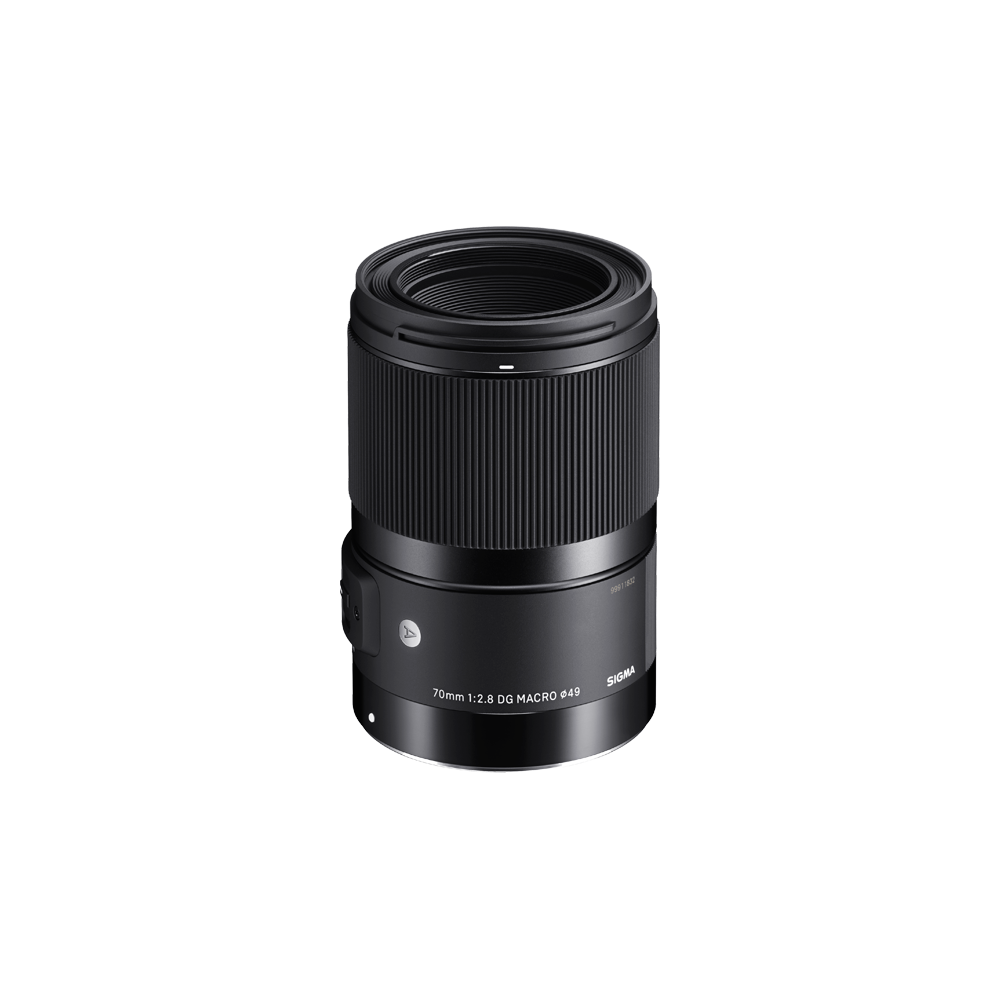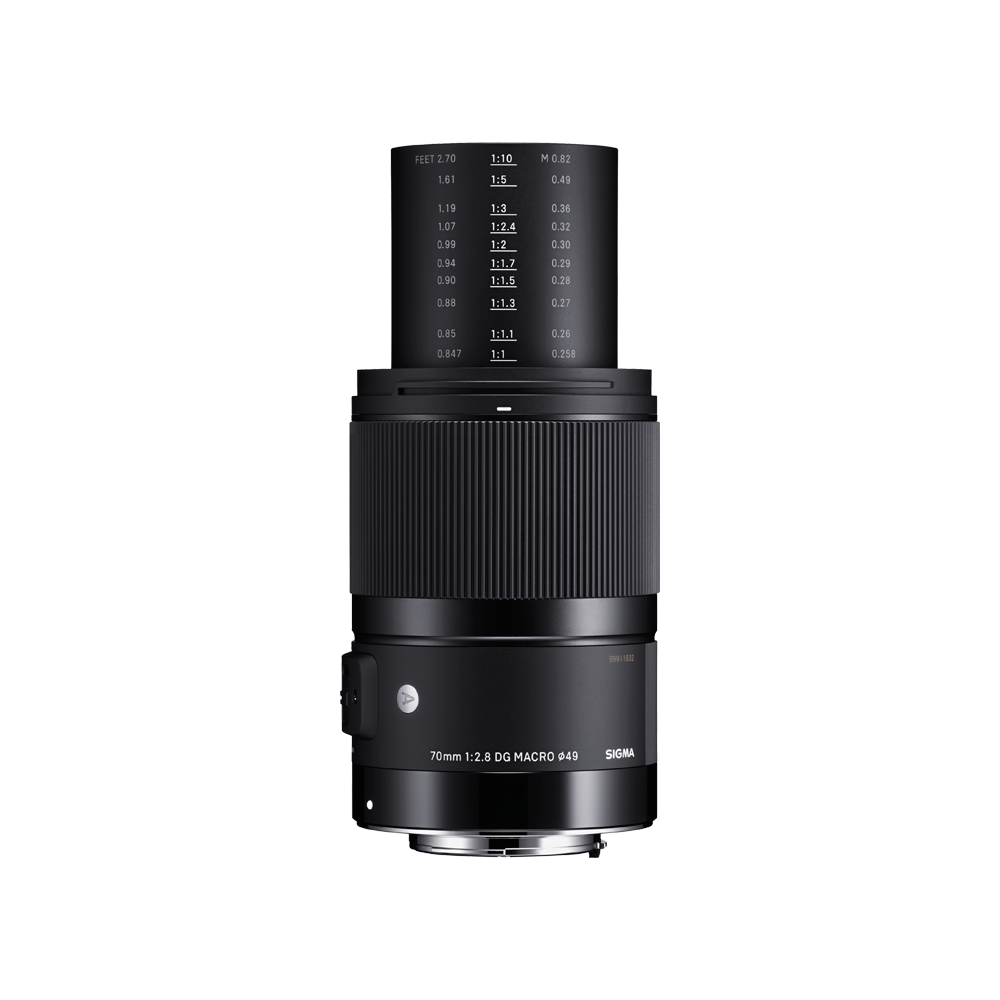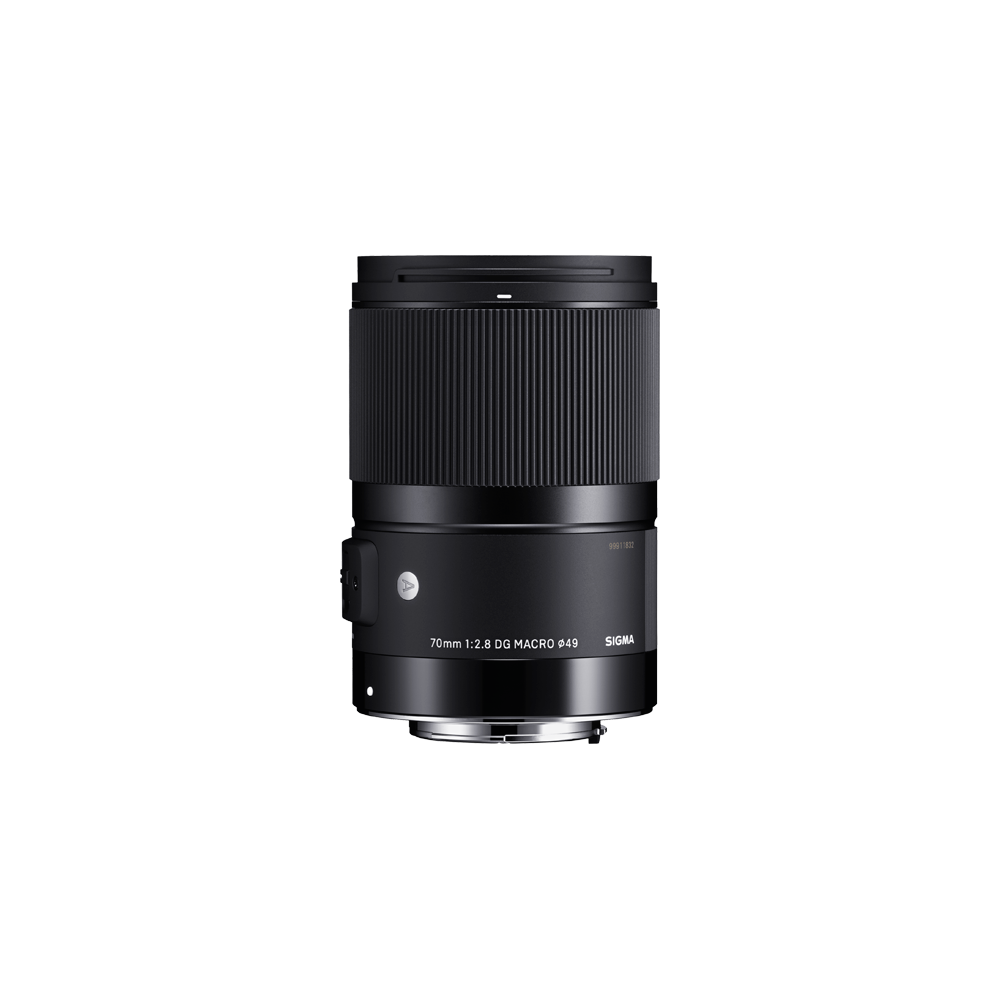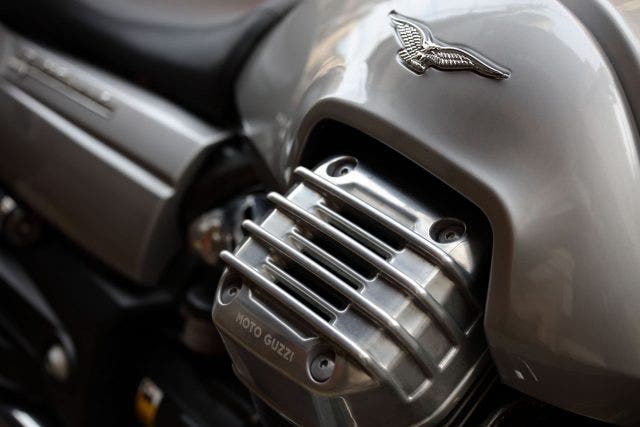70mm F2.8
DG MACRO
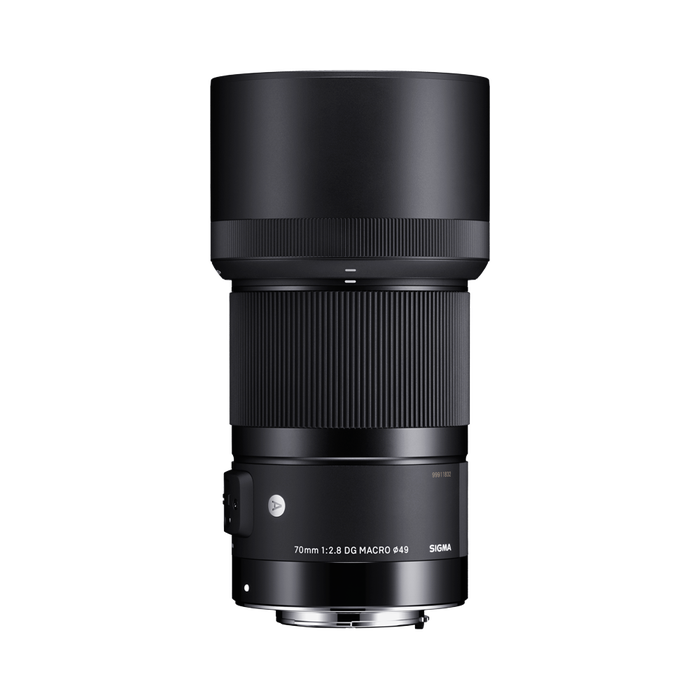

- First true 1:1 Macro Art lens with stunning resolution and clarity
- Focus-by-wire system for comfortable and precise focusing
- Compatible with Sony E-mount cameras with full-frame sensors
- Compatible with Canon Lens Aberration Correction
- Compatible with SIGMA TELE CONVERTERS (Execpt for the Sony E-mount)
- Note: Sony E-mount, CANON EF-mount and SIGMA SA-mount - Discontinued
AWARDS
|
|
|
| Angle of view | Macro |
|---|---|
| Camera Type | DSLR |
| Lens Mount | L-Mount, Sony E-mount, Canon EF-mount, Sigma SA |
| Sensor Size | Full Frame |
| Construction | 13 Elements in 10 Groups |
| Angle of view | 34.3° |
| Number of diaphragm blades | 9 (rounded diaphragm) |
| Minimum aperture | F22 |
| Minimum focusing distance | 25.8 cm |
| Maximum magnification ratio | 1:1 |
| Filter diameter | 49mm |
| Dimensions (diameter x length) | Sigma SA-mount ⌀ 70.8 mm x 105.8 mm |
| Weight (g) | Sigma SA-mount 665 g |
| Edition number | A018 |
| Accessories | Case and Lens Hood (LH708-01) supplied |
| EAN-code | Sigma SA 085126271565 |
| Specifications Info | DG - DG for Digital Full Frame and APS-C * The appearance, specifications, and the like of the product are subject to change for improvement without notice. ** This product is developed, manufactured and sold based on the specifications of E-mount which was disclosed by Sony Corporation under the license agreement with Sony Corporation. |
Design prioritizing optical performance
Top-level performance at every shooting distance
In order to realize top-level performance at every shooting distance, the lens features an extending, floating, two-group focus mechanism. This configuration minimizes aberration to produce optimal results at any focus distance. To minimize axial chromatic aberration, the optical system incorporates two FLD glass elements, two SLD glass elements, and one element with a high rate of anomalous partial dispersion and a high index of refraction. In addition, two aspherical lens elements help increase resolution at close shooting distances. This optical system makes possible a razor-sharp in-focus area contrasted with a bokeh area free of color streaking.
Designed to minimize flare and ghosting
From an early stage in the lens design process, flare and ghosting have been measured to establish an optical design resistant to strong incident light sources such as backlighting. Sigma’s Super Multi-Layer Coating reduces flare and ghosting to help photographers produce sharp and high contrast images even in backlit conditions. The included lens hood can be attached to block out extraneous light, which can have a negative effect on rendering performance.
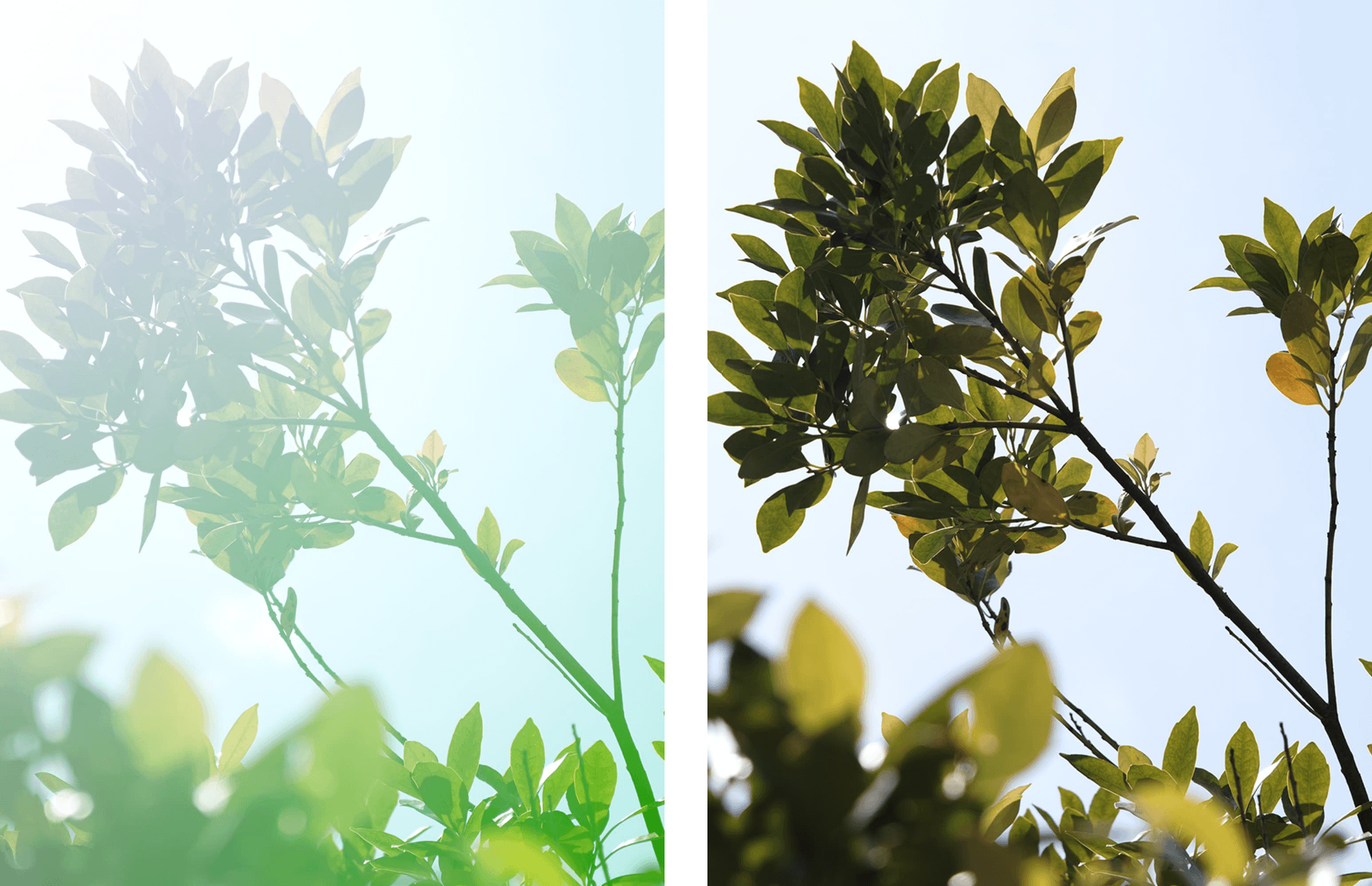

Exclusive low-dispersion glass
The degree to which light is refracted by glass depends on the light’s wavelength. This fact causes different colors of light to focus at slightly different points. The result is chromatic aberration, the color fringing that is particularly noticeable in telephoto lenses. Most chromatic aberration can be removed by combining a high-refractivity convex lens element with a low-refractivity concave element. Yet residual chromatic aberration known as “secondary spectrum” may still remain. To minimize this secondary spectrum, which can be a serious issue with conventional lenses, Sigma lenses feature up to three types of exclusive low-dispersion glass offering superior performance: ELD (Extraordinary Low Dispersion), SLD (Special Low Dispersion) and FLD (“F” Low Dispersion). In particular, FLD glass offers ultra-low dispersion in combination with high transmittance and the anomalous dispersion characteristics of fluorite. Meticulous deployment of these types of exclusive low-dispersion glass and optimization of power distribution gives Sigma lenses superlative image rendition undiminished by residual chromatic aberration.
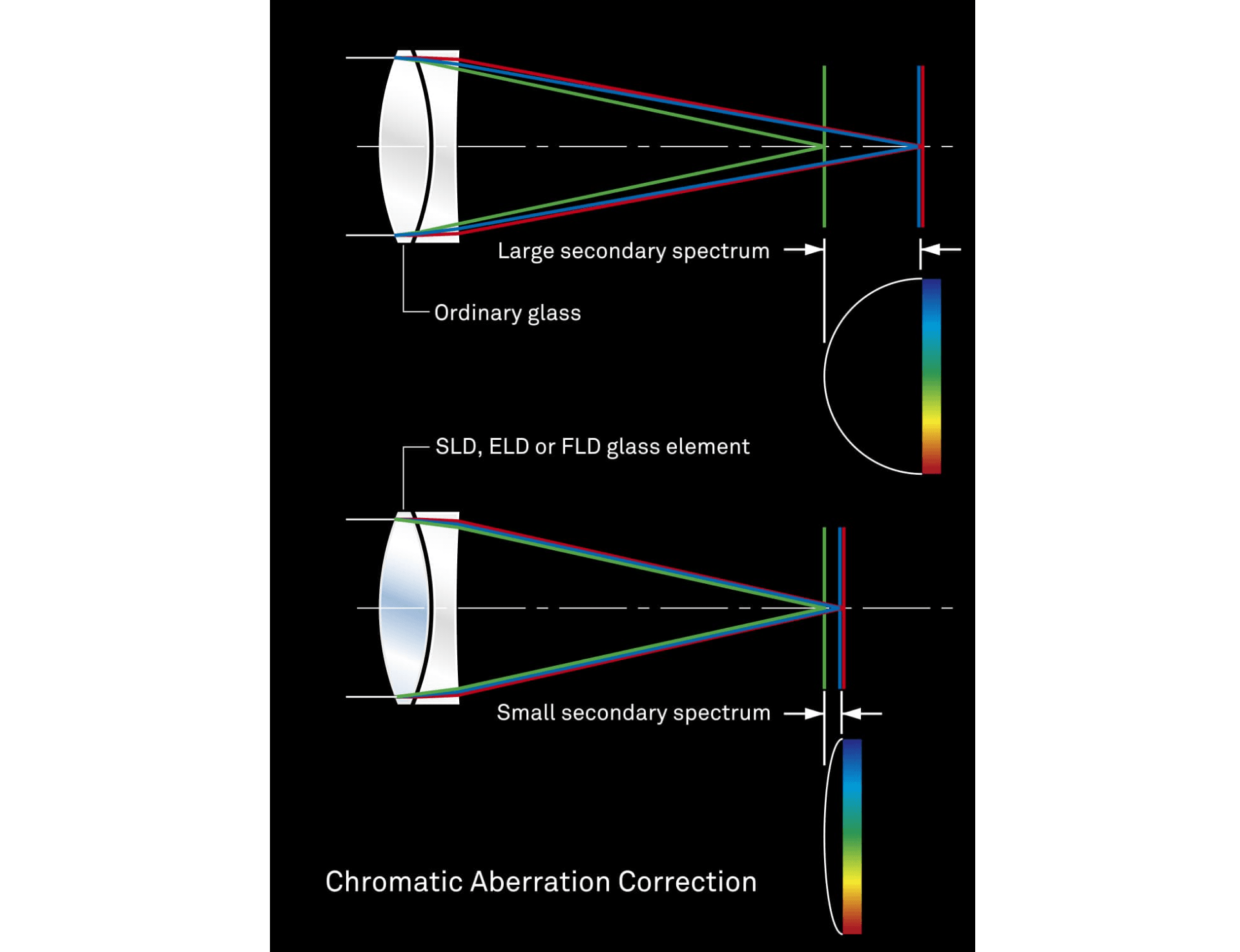

Focus-by-wire system for comfortable and precise focusing
The focus-by-wire system eliminates the direct mechanical connection between the focus ring and the focus drive system. Controlled by Sigma’s latest algorithm, a newly developed coreless DC motor adjusts focus with optimal speed and low noise. Full-time manual focus is available even during autofocus, allowing the photographer to make minute focus adjustments simply by turning the focus ring. In addition, the focus ring’s large angle of rotation helps the photographer achieve the extremely precise focusing required for effective macro photography.


Fast AF with full-time manual focus
Full-time manual focus function allows the lens to be switched to manual focus simply by rotating the focus ring.
Note: The operation of full-time MF may vary based on mount type.
Mount with Dust and Splash Resistant Structure
The lens mount incorporates rubber sealing to protect the mount from dust and water drops.
* Except for Sigma mount
Rounded diaphragm
The 9-blade rounded diaphragm creates an attractive blur in the out-of-focus areas of the image.
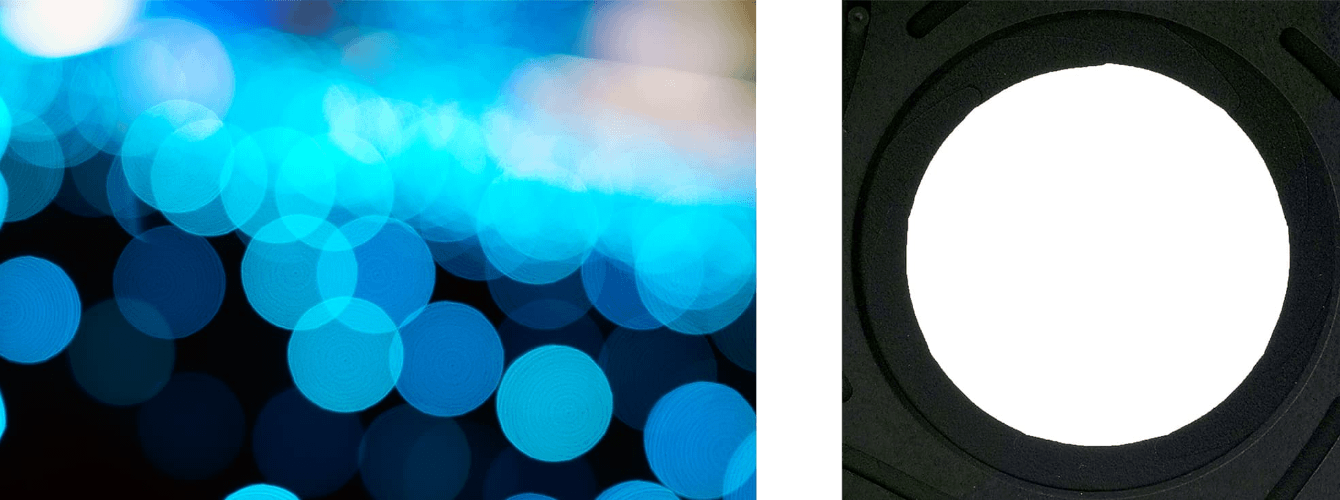

High-precision, rugged brass bayonet mount
The brass mount combines high precision with rugged construction. Its treated surfaces and enhanced strength contribute to the exceptional durability of the lens.
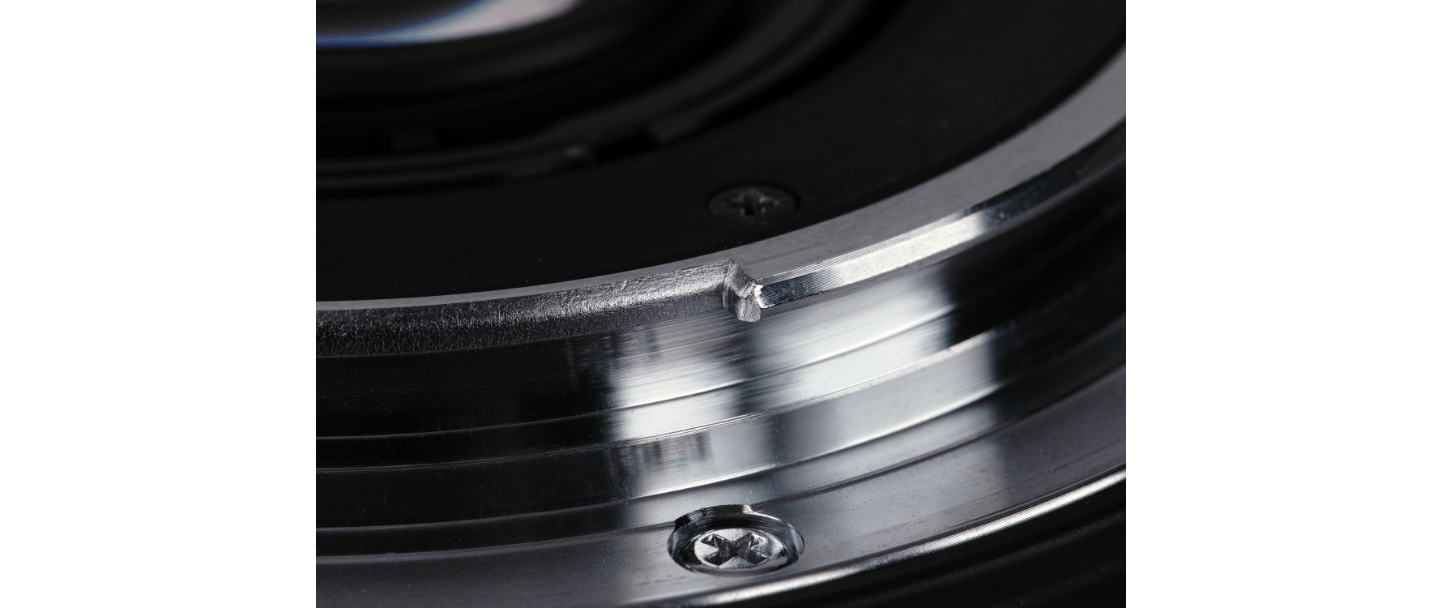

High-precision, rugged brass bayonet mountCompatible with full-frame Sony E-mount cameras
The version of this lens compatible with Sony E-mount mirrorless cameras contains the same optical system as for SLRs. Sigma MOUNT CONVERTER MC-11 is not required, as the lens performs the same functions as the converter, including in-camera image stabilization and in-camera lens aberration correction. In addition, the lens is compatible with Sony’s Continuous AF, which is not addressed by MOUNT CONVERTER MC-11. Sigma plans to offer over time Sony E-mount versions of every full-frame prime lens currently available in the Art line, from 14mm to 135mm.
Note: This product is developed, manufactured and sold based on the specifications of E-mount which was disclosed by Sony Corporation under the license agreement with Sony


Compatible with Canon Lens Aberration Correction
The Canon mount version of this lens is compatible with the Canon Lens Aberration Correction function.* Matching the optical characteristics of the lens, this function performs in-camera corrections of peripheral illumination, chromatic aberrations, distortion, and more, to further enhance image quality.
* Function not available on all Canon cameras. Available corrections may vary depending on the Canon camera model.
(*)Canon camera compatibility
The SGV interchangeable lens for Canon EF mount supports the "lens optical correction" installed in the following cameras.
Canon camera compatibility
EOS R5※, EOS R6※, EOS R※, EOS RP※, EOS Ra※, EOS-1D X Mark III,EOS 1DX mark Ⅱ, EOS 5Ds, EOS 5DsR, EOS 5D mark Ⅳ, EOS 6D mark Ⅱ, EOS 90D, EOS 80D, EOS 8000D(EOS Rebel T6s, EOS 760D), EOS 9000D(EOS 77D), EOS Kiss X8i(EOS Rebel T6i, EOS 750D), EOS Kiss X9i(EOS Rebel T7i, EOS 800D), EOS Kiss X9(EOS Rebel SL2, EOS 200D), EOS Kiss X10i, EOS Kiss X10
※ For SGV interchangeable lenses released before 2017* , it is necessary that the lens firmware is updated to Ver.2.00 or later.
* The release year can be confirmed by the edition number (A017, C015, etc.) engraved on the lens barrel.
※After setting the Digital Lens Optimizer to [OFF], set the "Peripheral Illumination Correction", "Chromatic Aberration Correction", and "Distortion Correction" of the "Lens Aberration Correction" function to [ON] to achieve the appropriate corrections in accordance with the optical characteristics of each lens.
Compatible with ELECTRONIC FLASH MACROEM-140 DG
Exclusively for Sigma 70mm F2.8 DG MACRO | Art, the 65mm MACRO FLASH ADAPTER makes the lens compatible with ELECTRONIC FLASH MACRO EM-140 DG (both accessories sold separately).*Thanks to the 72mm filter thread, a 72mm adapter can also be added so as to accommodate macro flashes other than EM-140 DG as well as ring lights.
* Sigma SA mount only


ELECTRONIC FLASH MACRO EM-140 DG
Compatible with SIGMA TELE CONVERTERS*1
The lens is compatible with Sigma TELE CONVERTERS (sold separately) designed for the company’s new lens lines. Sigma TELE CONVERTER TC-1401 allows the lens to be used as a 98mm F4 mid-telephoto macro with autofocus functionality,*2 while Sigma TELE CONVERTER TC-2001 allows the lens to be used as a 140mm F5.6 mid-telephoto macro with manual focus.
*1 Not available for L-Mount and Sony E-mount lenses
*2 Autofocus available at 0.5m to infinity.


Compatible with Mount Converter MC-11*
Mount Converter MC-11 allows you to use your Sigma SA mount and Sigma EOS mount (Canon-compatible) interchangeable lenses with the Sony E-mount camera body.
* Sigma and Canon mount lenses


LENS CONSTRUCTION
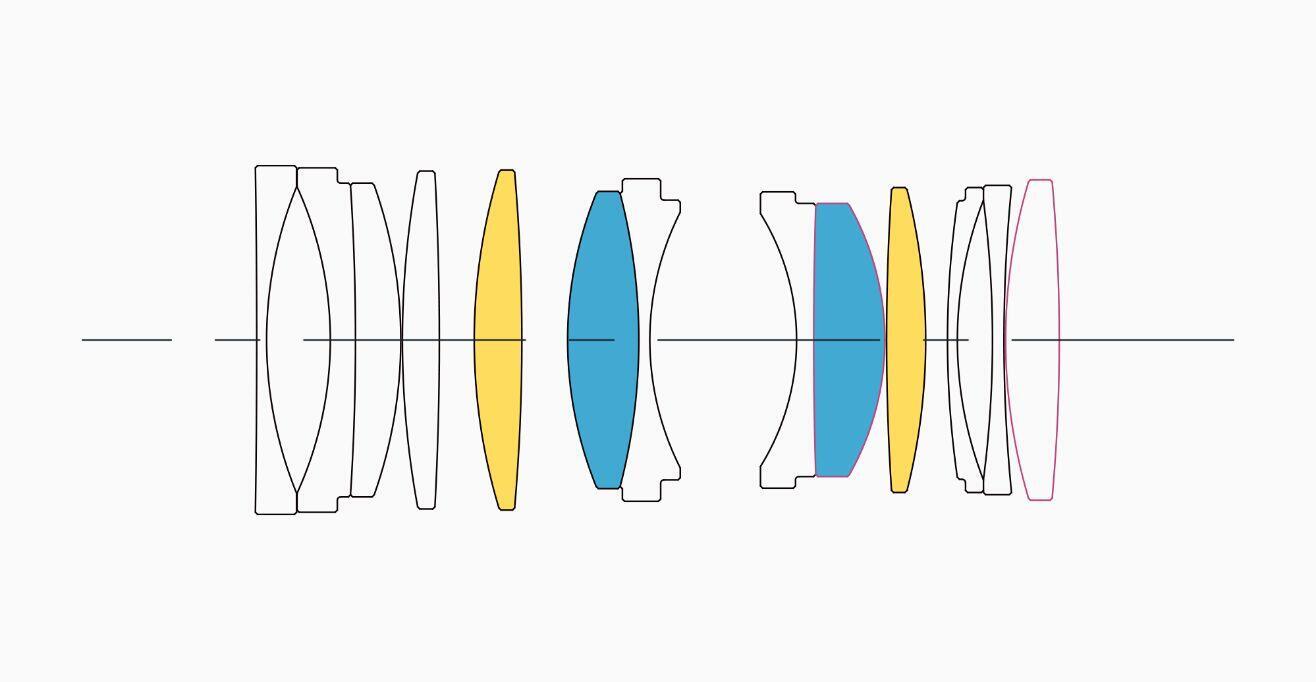

|
|
|
|
|
MTF CHART
There are two types of MTF chart. One considers the diffraction quality of light, which is called "Diffraction MTF", and the other, "Geometrical MTF" does not.
The quality of light appears in the diffracted light, and becomes more distinct as the F value gets bigger, resulting in lower image quality. Also, diffracted light exists at every aperture, which is why Sigma has been releasing Diffraction MTF data from the beginning since it is very close to the actual image data.
The advantage of using "Geometric MTF" data is that it is easy to measure and calculate since it does not consider the diffraction quality of light, yet it tends to show higher values in the graph than actual images.
The readings at 10 lines per millimeter measure the lens's contrast ability ( red lines), repeating fine parallel lines spaced at 30 lines per millimeter measure the lens's sharpness ability (green lines), when the aperture is wide open.
Fine repeating line sets are created parallel to a diagonal line running from corner to corner of the frame, are called Sagittal lines (S) and sets of repeating lines vertical to these lines are drawn, called Moridional (M) line sets.
*The MTF chart gives the result at the wide-open aperture.
|
Spatial frequency |
S:Sagittal Line |
M: Meridional Line |
|
10lp/mm |
|
|
|
30lp/mm |
|
|
DIFFRACTION MTF
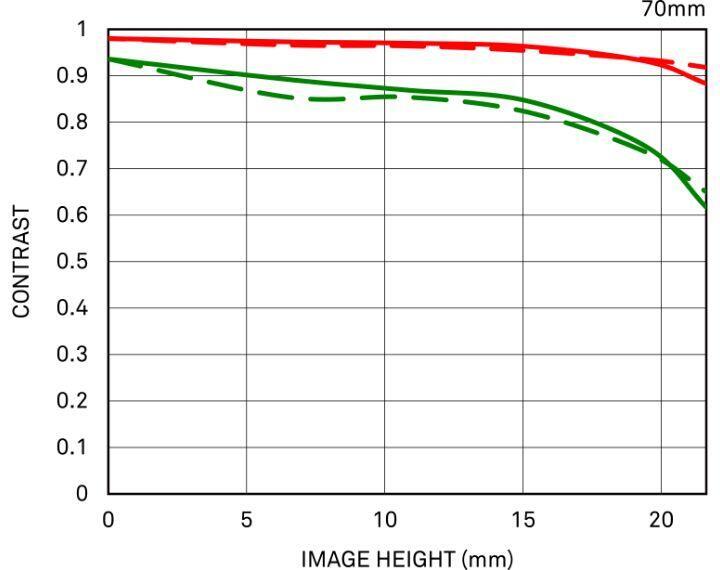

GEOMETRICAL MTF
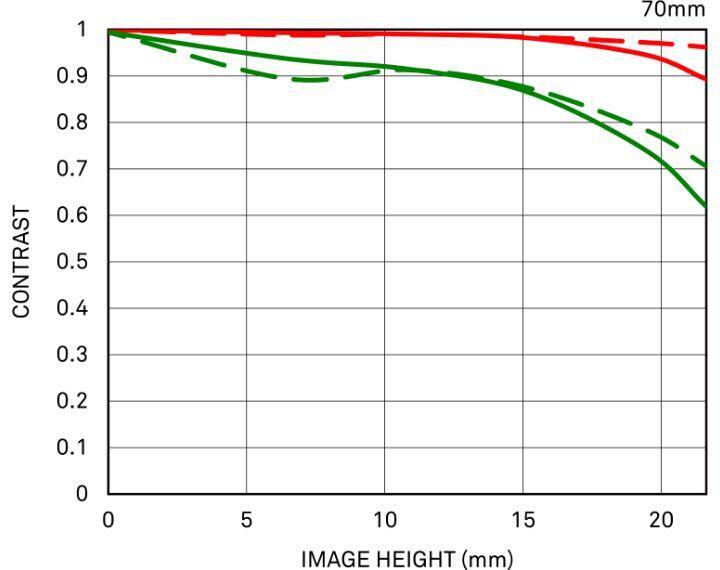

DISTORTION
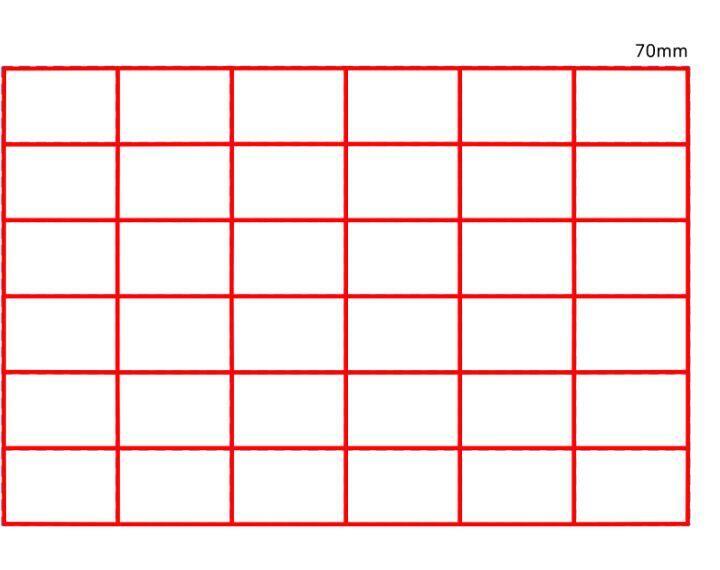

DISTORTION
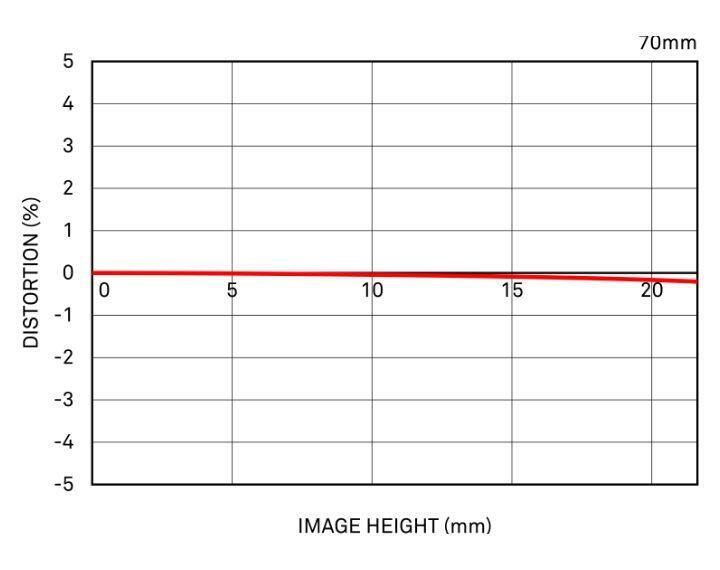

High-precision, rugged brass bayonet mount
The brass mount combines high precision with rugged construction. Its treated surfaces and enhanced strength contribute to the exceptional durability of the lens.
Mount with Dust and Splash Resistant Structure
The lens mount incorporates rubber sealing to protect the mount from dust and water drops.
Rounded diaphragm
The polygonal shape of a conventional iris dia phragm causes out-of-focus light points to appear polygonal. A rounded diaphragm is designed to pro duce rounded out-of-focus light points when opened to near maximum aperture. This creates attractive bokeh effects in many situations, such as when pho tographing a subject against an out-of-focus surface of water from which light is being reflected.
Exclusive low-dispersion glass
The degree to which light is refracted by glass depends on the light's wavelength. This fact causes different colors of light to focus at slightly different points. The result is chromatic aberration, the color fringing that is particularly noticeable in telephoto lenses. Most chromatic aberration can be removed by combining a high-refractivity convex lens element with a low-refractivity concave element. Yet residual chromatic aberration known as "secondary spectrum" may still remain. To minimize this secondary spectrum, which can be a serious issue with conventional lenses, SIGMA lenses feature up to three types of exclusive low-dispersion glass offering superior performance: ELD (Extraordinary Low Dispersion), SLD (Special Low Dispersion) and FLD ("F" Low Dispersion). In particular, FLD glass offers ultra-low dispersion in combination with high transmittance and the anomalous dispersion characteristics of fluorite. Meticulous deployment of these types of exclusive low-dispersion glass and optimization of power distribution gives SIGMA lenses superlative image rendition undiminished by residual chromatic aberration.

